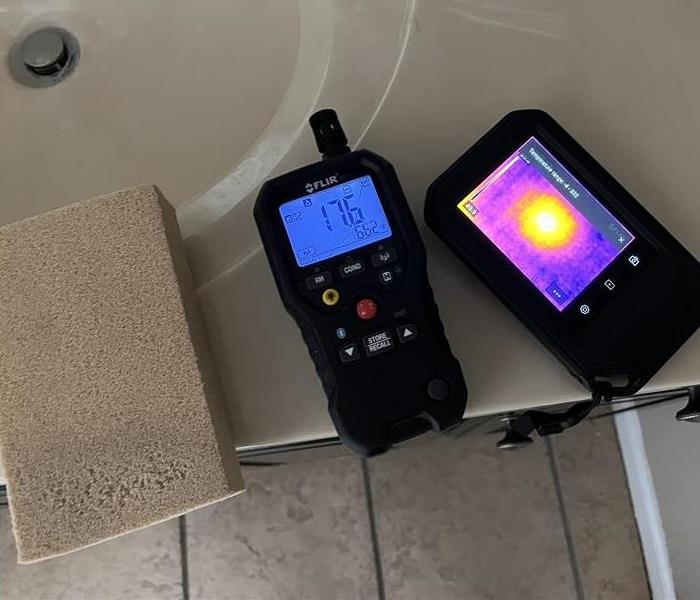The SERVice PROfessional's Tools of the Trade
4/5/2024 (Permalink)
 A dry sponge, moisture meter and infrared camera are common tools of the trade when working fire and water jobs.
A dry sponge, moisture meter and infrared camera are common tools of the trade when working fire and water jobs.
As experts in the field, we understand the importance of using high-quality equipment to ensure efficient and effective restoration work.
One of the key tools of the trade when assessing water damage is a moisture meter. A moisture meter is a device that is used to help accurately measure the percentage of water, wetness or dryness, within a given material. Moisture meters can be invasive or non-invasive, meaning they do not have to penetrate the material. At SERVPRO of Jonesboro we use moisture meters with separate thermo hygrometers, meaning that while the moisture meter checks for wetness/dryness, the thermos hygrometer checks the temperature and relative humidity.
Another essential tool is an infrared camera. Infrared cameras are non-contact devices that detect thermal energy and then convert it into an electrical signal, which is then processed to produce an image. Infrared technology uses temperature to determine moisture, cooler temps indicate the material is wet while higher temps are dry. The term FLIR (which stands for “Forward Looking Infrared”) refers to the technology used to create an infrared image of a scene without having to “scan” the scene with a moving sensor, which is what was previously required. A moisture meter is always used to confirm the findings made with an FLIR camera.
A dry sponge is used to test for soot particles after fire damage and are ideal for cleaning surfaces where you can’t use water or solvents. By swiping the sponge across surfaces, we can see the accumulation of particles. A black or brown discoloration is indicative of fire-related particles and white or light gray is normal house dust. The uniqueness of the sponge is all in the cell structure, it is a vulcanized, non-toxic, natural latex rubber sponge. When the product was invented, it was called a chemical sponge, because, at the time, chemicals meant more cleaning power, but there are no actual chemicals within the sponge, and they are entirely safe for use on delicate surfaces.
These are just some of the tools we used every day at SERVPRO of Jonesboro. Investing in the right tools of the trade not only enhances the efficiency of our work but also showcases our expertise and commitment to restoring properties with care and precision.





 24/7 Emergency Service
24/7 Emergency Service